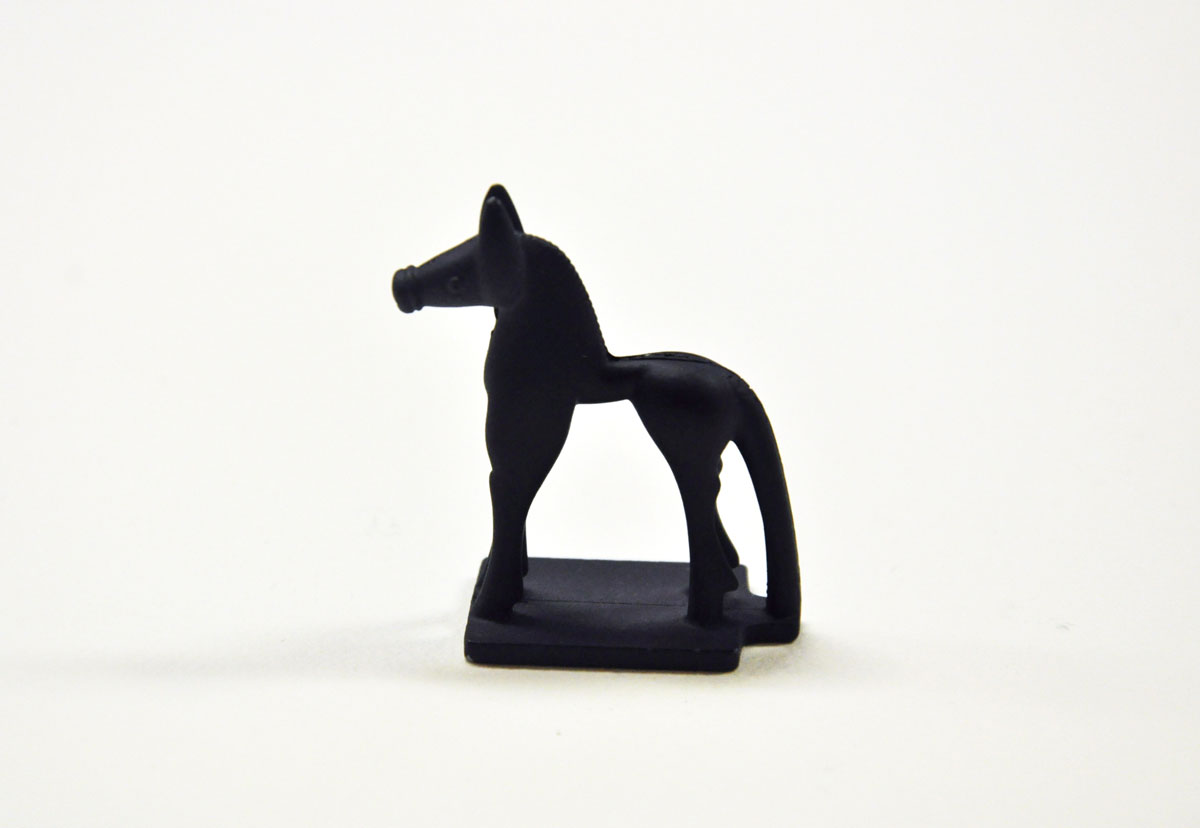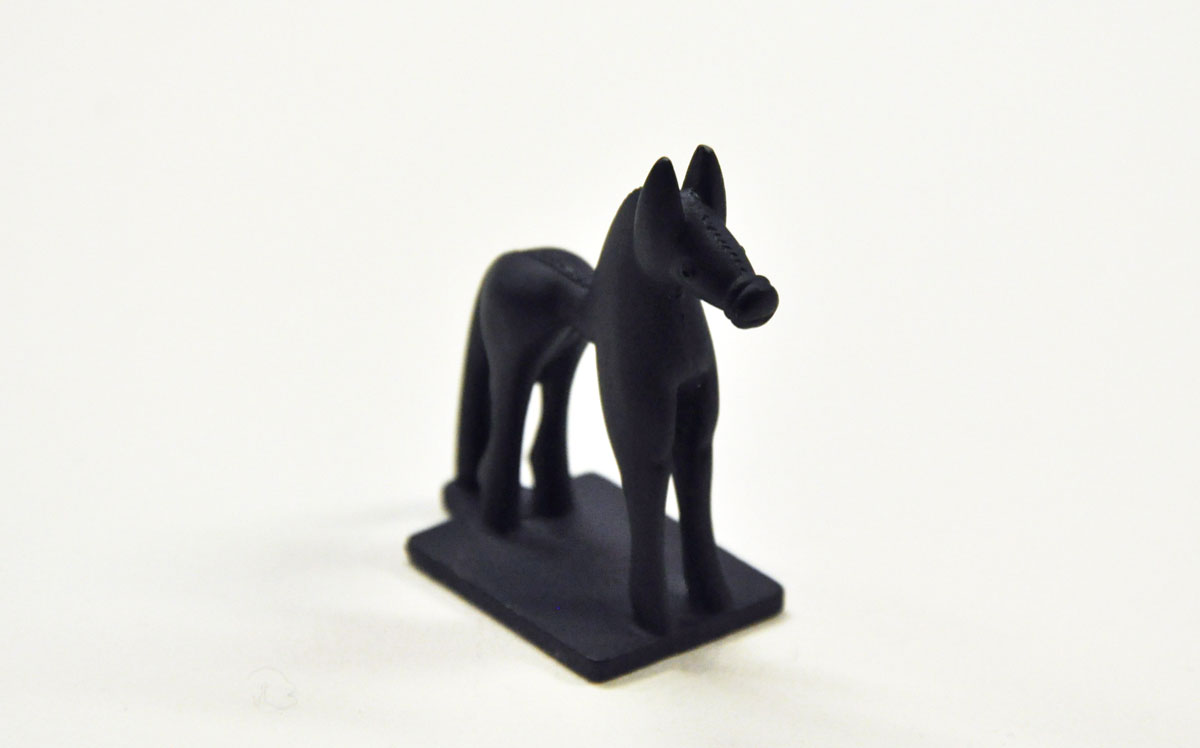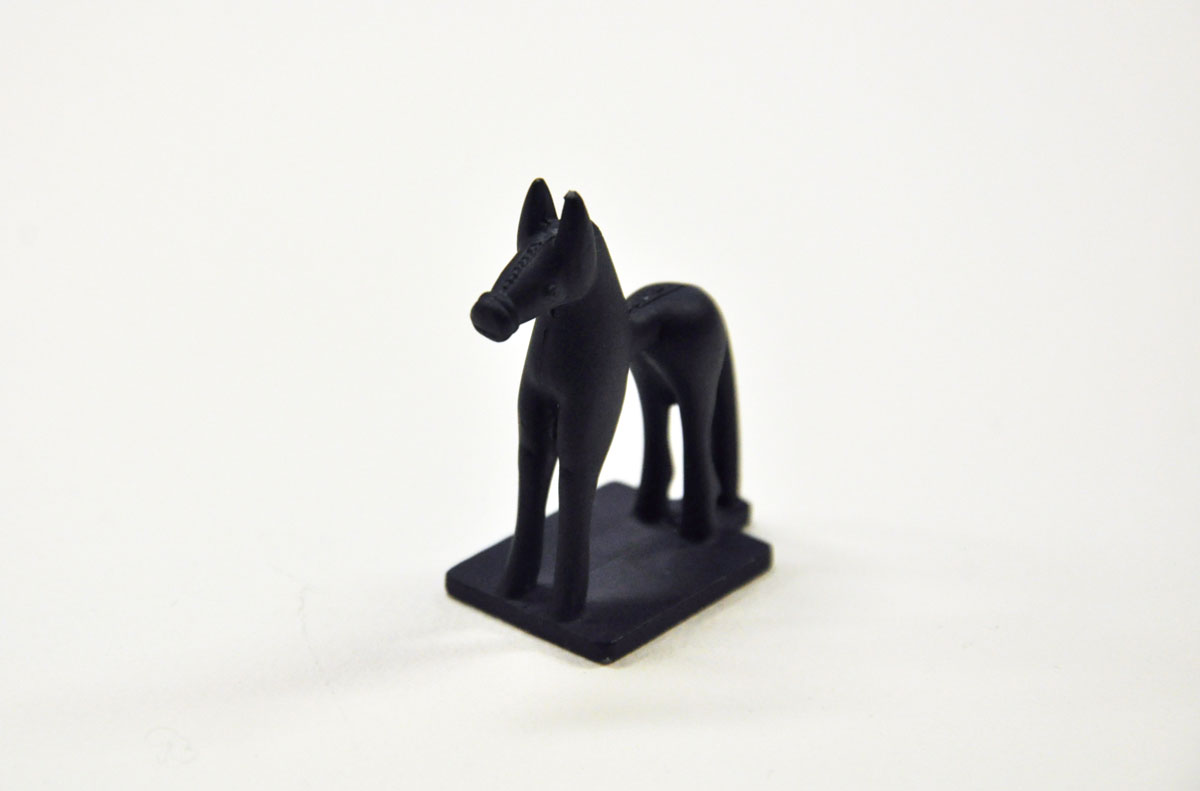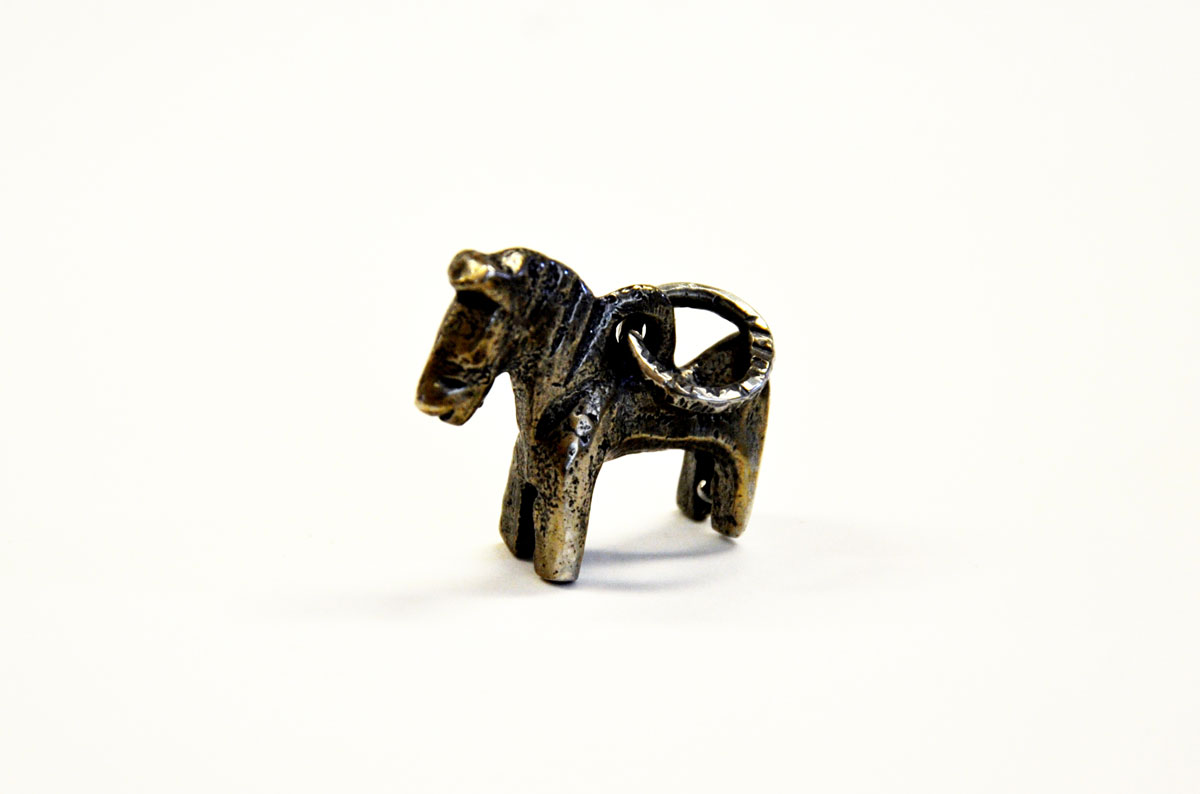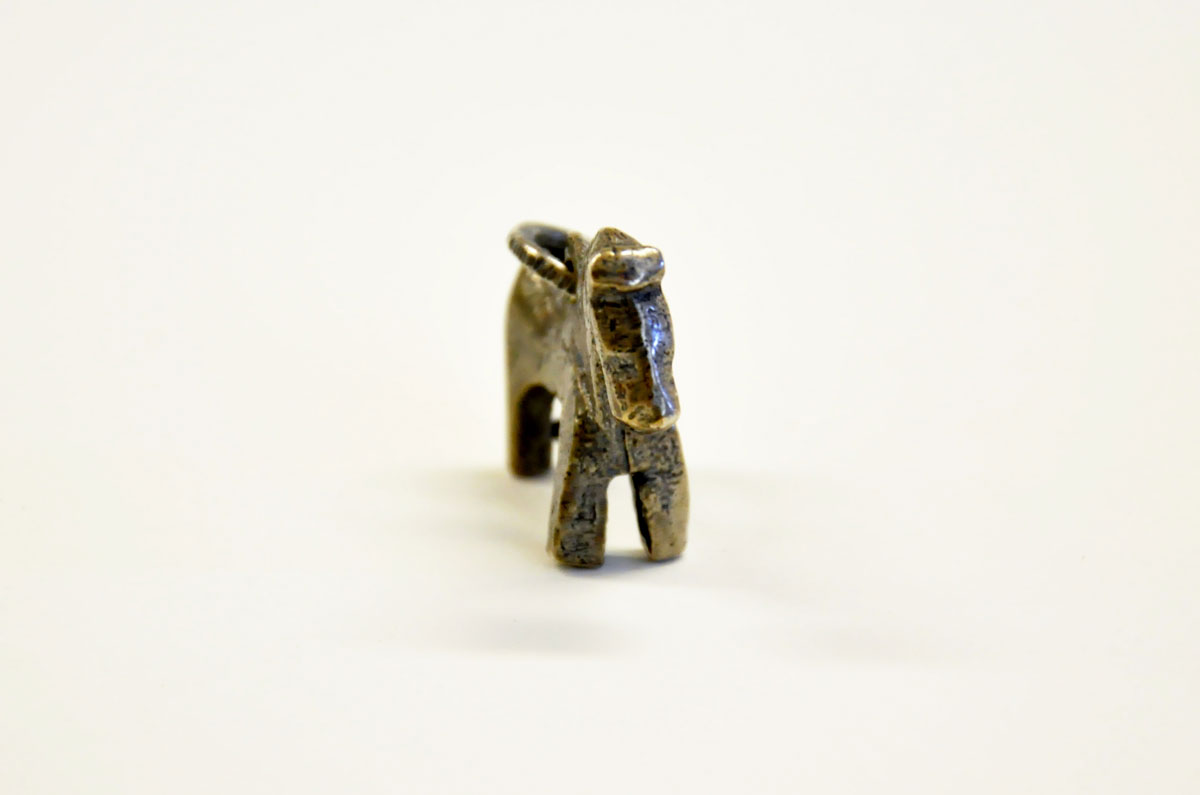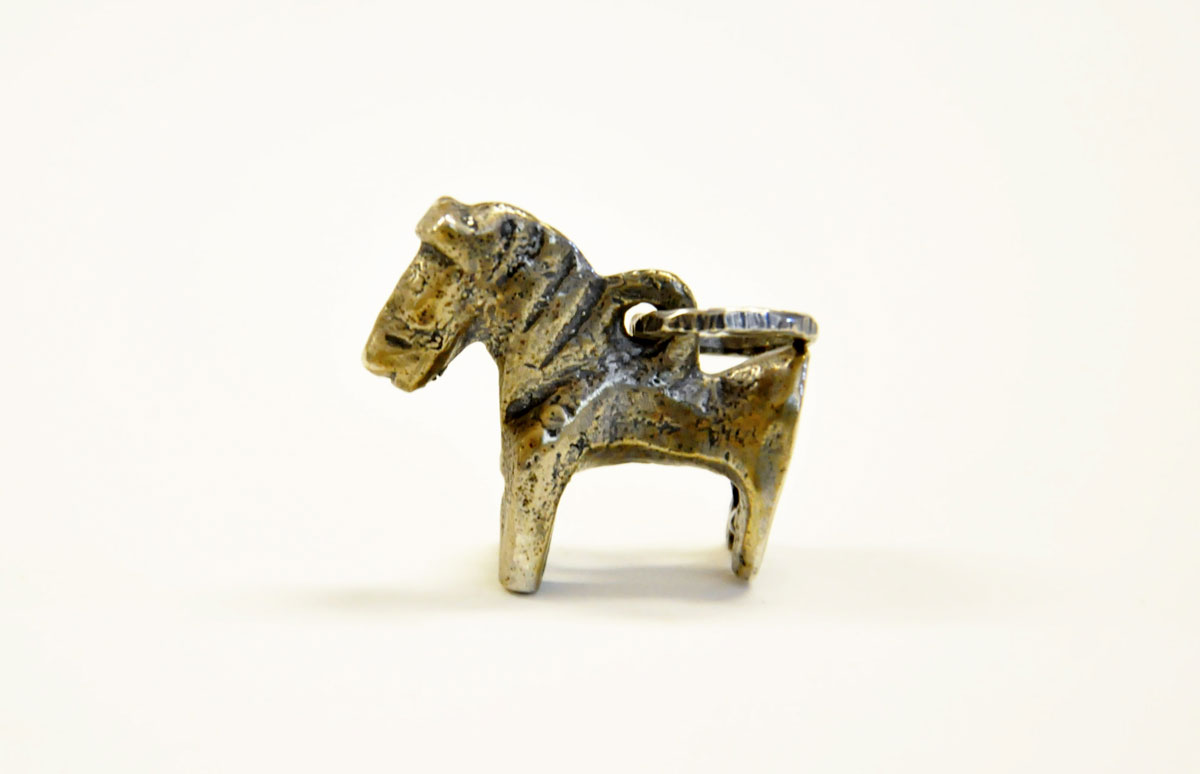Mules, sheep, oxen … many animals can serve as a mount, but amongst them, only the horse carries a certain element of prestige. Indeed, horses are more expensive and require more attention and maintenance. For centuries, possessing a horse was considered a sign of wealth and social distinction.
Depictions of horses as symbols of power appeared along with their domestication. Over the course of human history, noble steeds have been linked to the elite, from prehistoric leaders buried together with their mounts to the prestigious cavalry of ancient Rome. This symbol flourished in the Renaissance with the creation of countless equestrian portraits and statues of monarchs and warlords. The physical prowess of the horse manifests the superiority and political authority of its owner. On top of a stallion, a king dominates his subjects with ease.
Statuette of a Horse
bronze, 21st century, replica from a votive bronze statuette, ca. 700 BC, British museum, London
This horse statuette was probably a votive offering, discovered in the Greek city of Bassai. During the geometric period (800-700 BC), a large number of these bronze ex-votos were produced and dedicated in the major sanctuaries. The role of these precious objects were not only to appeal the favour of a god, but also to display one’s social rank, as only aristocrats could afford a horse.
Statuette of a Horse
bronze, 21st century, replica from a Greek statuette, Cadiz, Spain

